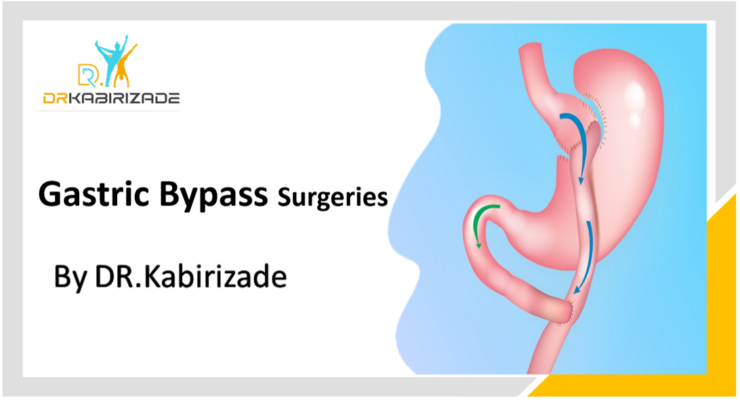Obesity surgeries
Laparoscopic obesity surgery, also known as bariatric surgery, is a type of weight loss surgery that is performed using a minimally invasive technique. Instead of making a large incision in the abdomen, the surgeon makes several small incisions and inserts a tiny camera and surgical tools into the abdomen.

There are different types of laparoscopic obesity surgeries, but they all work by reducing the size of the stomach or by rerouting the digestive system. Some of the most common types of laparoscopic obesity surgeries include:
- Gastric sleeve surgery: This involves removing a large portion of the stomach, leaving a sleeve-shaped pouch.
- Gastric bypass surgery: This involves creating a small pouch from the top of the stomach and connecting it to the small intestine, bypassing the rest of the stomach and a portion of the small intestine.
- Adjustable gastric band surgery: This involves placing an adjustable band around the top of the stomach, creating a small pouch and limiting the amount of food that can be consumed.
These surgeries are typically performed on individuals who have a body mass index (BMI) of 40 or higher, or a BMI of 35 or higher with obesity-related health problems. The goal of these surgeries is to help individuals lose a significant amount of weight and improve their overall health.
Laparoscopic obesity surgeries are generally considered safe, but like any surgery, they do carry some risks. It’s important to discuss the risks and benefits with your doctor and determine if this type of surgery is the right choice for you.

Gastric sleeve surgery
Gastric sleeve surgery, also known as sleeve gastrectomy, is a type of laparoscopic obesity surgery that involves removing a large portion of the stomach, leaving a sleeve-shaped pouch. This smaller stomach pouch can hold less food, which results in a feeling of fullness after eating smaller meals.
During the surgery, the surgeon will make several small incisions in the abdomen and insert a laparoscope (a small camera) and surgical tools to remove the portion of the stomach. The surgery usually takes about an hour to complete, and most people can leave the hospital within a day or two.
After the surgery, most people will need to follow a strict diet and exercise plan to achieve optimal weight loss results. The amount of weight loss will vary depending on the individual and their commitment to the post-surgery lifestyle changes. On average, people who undergo gastric sleeve surgery can expect to lose about 50-70% of their excess weight within the first two years.
In addition to weight loss, gastric sleeve surgery can also improve or resolve obesity-related health conditions such as type 2 diabetes, high blood pressure, and sleep apnea. However, as with any surgery, there are risks involved, including bleeding, infection, and complications from anesthesia.
It’s important to discuss the risks and benefits of gastric sleeve surgery with your doctor to determine if it’s the right choice for you. They can help you understand the expected weight loss outcomes and guide you through the pre- and post-surgery process to help you achieve your weight loss goals.

risks and benefits of gastric sleeve surgery
Gastric sleeve surgery, also known as sleeve gastrectomy, is a type of bariatric surgery that involves removing a large portion of the stomach to create a smaller, sleeve-shaped stomach pouch. This surgery is typically recommended for individuals who have a body mass index (BMI) of 40 or higher, or a BMI of 35 or higher with obesity-related health problems.
Like any surgical procedure, gastric sleeve surgery carries both risks and benefits. It’s important to discuss these with your doctor to determine if this type of surgery is the right choice for you. Here are some of the risks and benefits of gastric sleeve surgery:
Risks:
- Infection: There is a risk of infection after any surgical procedure, including gastric sleeve surgery.
- Bleeding: There is a risk of bleeding during or after the surgery.
- Blood clots: Blood clots can form in the legs and travel to the lungs, which can be life-threatening.
- Stomach leakage: There is a risk of leakage from the newly created stomach pouch, which can cause infection and other complications.
- Nutrient deficiencies: Because the stomach is smaller, it may be harder to get enough of certain nutrients, such as vitamin B12, iron, and calcium.
Benefits:
- Weight loss: Gastric sleeve surgery can lead to significant weight loss, with most people losing 50-70% of their excess weight within the first two years.
- Improvement or resolution of health problems: Gastric sleeve surgery can improve or resolve obesity-related health problems such as type 2 diabetes, high blood pressure, and sleep apnea.
- Improved quality of life: Losing weight can lead to improved self-esteem, mobility, and overall quality of life.
- Reduced medication use: After gastric sleeve surgery, many people can reduce or eliminate their need for medications to manage obesity-related health problems.
- Long-term success: Gastric sleeve surgery has been shown to have long-term success in maintaining weight loss.
It’s important to remember that gastric sleeve surgery is not a quick fix for weight loss and requires a commitment to lifestyle changes, such as a healthy diet and regular exercise. It’s also important to work closely with your healthcare team to manage any potential risks or complications after surgery.

how prevent risks of gastric sleeve surgery
Here are some ways to prevent the risks associated with gastric sleeve surgery:
- Infection: To prevent infection, it’s important to keep the surgical site clean and dry. Follow your surgeon’s instructions for wound care and keep the incision site covered with a sterile dressing. Take prescribed antibiotics as directed, and avoid touching the incision site with dirty hands.
- Bleeding: To prevent bleeding, avoid taking blood-thinning medications before the surgery, as these can increase the risk of bleeding. During the surgery, your surgeon will use advanced techniques to minimize bleeding, and you may be given medication to help prevent blood clots.
- Blood clots: To prevent blood clots, you may be given compression stockings to wear during and after the surgery, which can help improve circulation in the legs. You may also be given medication to prevent blood clots, such as aspirin or heparin.
- Stomach leakage: To prevent stomach leakage, it’s important to follow your surgeon’s instructions for post-surgery diet and activity. Avoid eating solid food for the first few weeks after surgery and stick to a liquid diet. Gradually introduce soft foods, and avoid foods that are high in fat, sugar, or fiber. Follow your surgeon’s instructions for activity and avoid lifting heavy objects or doing strenuous exercise until you are fully healed.
- Nutrient deficiencies: To prevent nutrient deficiencies, it’s important to take vitamin and mineral supplements as directed by your healthcare team. After gastric sleeve surgery, the body may have difficulty absorbing certain nutrients, such as vitamin B12, iron, and calcium. Your healthcare team can monitor your nutrient levels and make recommendations for supplementation.
It’s important to work closely with your healthcare team before and after surgery to minimize the risks associated with gastric sleeve surgery. They can provide guidance on diet, exercise, and other lifestyle changes to help you achieve the best possible outcome.
Discover the Life-Changing Benefits of Gastric Bypass Surgery

Transform Your Life and Conquer Obesity with Advanced Gastric Bypass Techniques
Say goodbye to obesity and welcome a healthier, happier life with gastric bypass surgery! This life-changing procedure has helped millions shed excess weight and regain control of their lives. By choosing gastric bypass, you’re not just opting for a weight loss solution; you’re embracing a complete lifestyle transformation.
In this article, we’ll dive into the different types of gastric bypass procedures and how they’re performed. Get ready to be inspired and embark on your journey towards a healthier you!
۱٫Roux-en-Y Gastric Bypass (RYGB)
“The Gold Standard of Gastric Bypass, Unlock Your Healthier Self”
The Roux-en-Y Gastric Bypass (RYGB) is the most common and widely performed gastric bypass procedure. It combines both restrictive and malabsorptive techniques to help you lose weight effectively. In this procedure, the surgeon creates a small pouch from the upper part of the stomach and connects it directly to the small intestine. This bypasses a significant portion of the stomach and the upper part of the small intestine, reducing the amount of food you can eat and the number of calories your body absorbs. Embrace RYGB and unlock your healthier self!
۲٫Mini Gastric Bypass (MGB)
“A Simpler, Faster Solution to Conquer Obesity”
The Mini Gastric Bypass (MGB) is a less invasive alternative to the traditional Roux-en-Y procedure. It involves creating a smaller stomach pouch and attaching it to the small intestine in a loop, bypassing a portion of the digestive tract. This technique is quicker and simpler, with fewer complications and a shorter recovery time. Choose MGB for a more streamlined approach to tackling obesity and reclaiming your life.
۳٫Biliopancreatic Diversion with Duodenal Switch (BPD-DS)
“Maximize Your Weight Loss Potential with BPD-DS”
Biliopancreatic Diversion with Duodenal Switch (BPD-DS) is an advanced gastric bypass procedure that offers significant weight loss results. In this technique, the surgeon removes a portion of the stomach, leaving a small, tubular pouch. The small intestine is then divided, and the lower part is connected to the stomach pouch. The upper part is reattached further down, which reduces calorie absorption. BPD-DS is particularly effective for those with severe obesity or related health issues. Embrace the potential of BPD-DS and take control of your weight loss journey.
Don’t let obesity dictate your life any longer!
Gastric bypass surgery offers various techniques to help you regain control and live a healthier, happier life. With options like Roux-en-Y, Mini Gastric Bypass, and Biliopancreatic Diversion with Duodenal Switch, there’s a solution tailored to your needs. Consult with a bariatric surgeon to determine the best option for you and embark on your life-changing journey towards a brighter, healthier future. Choose gastric bypass and conquer obesity once and for all!
For More information Call us on Whatsapp : +989127906928




